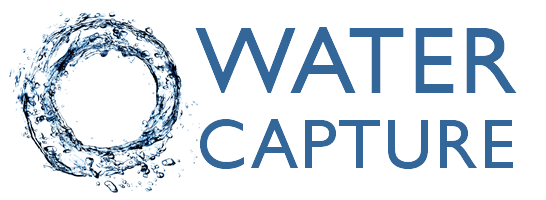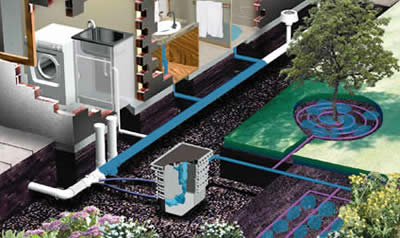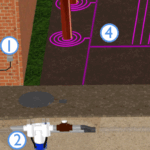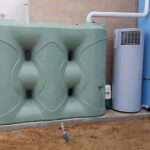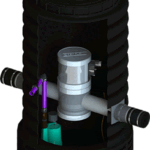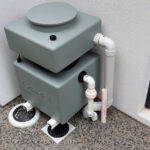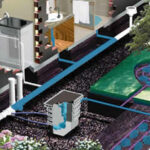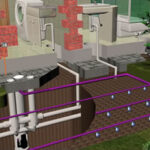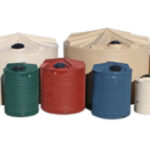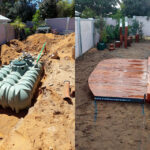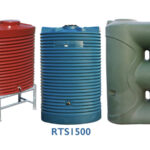We are Perth’s and Fremantle’s leading business in the sale, supply, installation and maintenance of Greywater Systems
Indicative quotes given based on description of job or on Plans provided.
Accredited Installer of Award Winning AWWS Greyflow Greywater Systems
AWWS Systems come with a 2 Year Warranty if they are installed by an Accredited Installer and Serviced at 12 months by an Accredited Installer.

Greywater Garden – lush all summer
About Greywater
The average person living in Perth uses about 100 litres of water per day that could be going to their gardens.
The best source of Greywater is from the Shower and Bath. This generally represents the largest percentage of useable greywater from the house. The laundry is the next best source, and quite often the easiest source to obtain, especially in older houses where troughs have raised exposed pipe work.
Top loading washing machines can use nearly twice as much water as modern front loaders. Water from vanities is a relatively small amount that will contain toothpaste, shavings and soap.
It is generally accepted that if you are going to install a Greywater Diversion System you are also going to start using laundry and bathroom products that are suitable for the garden. This may include organic soaps and shampoos and laundry detergents that are greywater friendly. Chances are that you already use organic products and you are environmentally conscious. Some products contain harmful chemicals that will be detrimental to plants, insects and soil microbes as well as the soil structure and organic matter.
Before & After with Greywater
Dripline greywater irrigation prior to planting

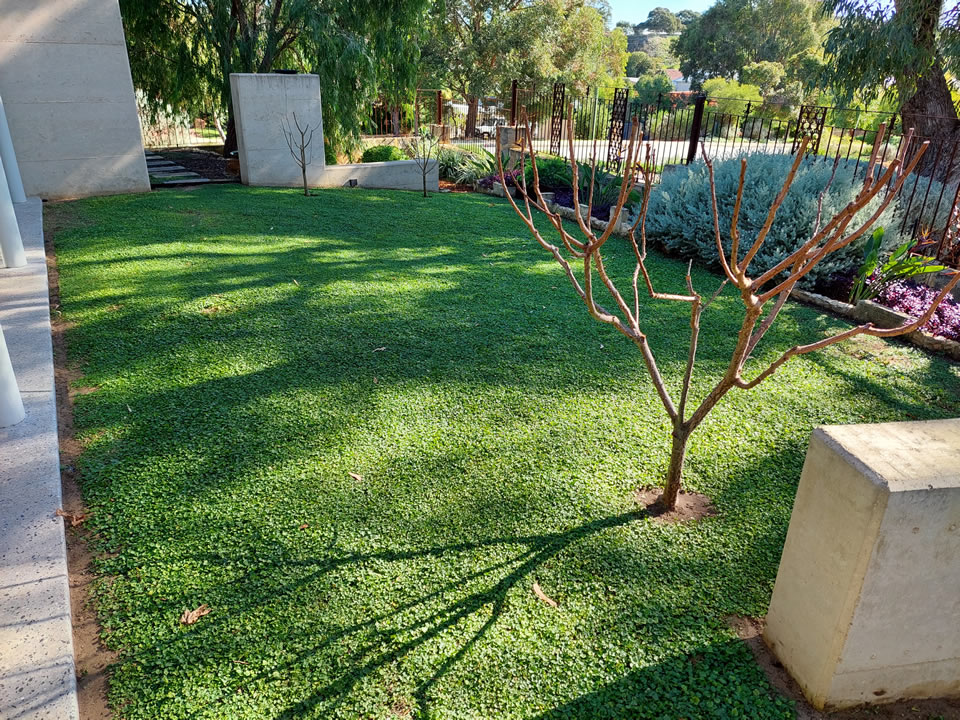
Greywater Systems
There is a large choice of approved greywater systems now available in Western Australia. There are two distinct types:
(1) The Diversion System:
Selected fixtures in the house (ie shower and laundry) are re-plumbed to divert the water into a greywater system from where it is pumped to the gardens via dripline. Some form of filtration keeps the lint, hair, soap scum, and dirt from blocking the sub-surface irrigation emitters.
(2) The Treatment System:
Treats the water by way of filtration, disinfecting, UV or other means to improve the quality of the water. Suitable in some states for toilet flushing and garden watering.
Water Capture believe that a suitable greywater system for your house will depend on many different factors. These will include – budget, plumbing invert levels of drainage pipes, garden size and plants, number of bedrooms in the house, number of people living in the house, access to site and personal preference.
Rules and Regulations
All Greywater systems must comply with the ‘Code of Practice for the Reuse of Greywater 2010’.

Some of the procedure involves:
• The Greywater system must have been approved by the Western Australian Health Department.
• An Application to the local council/shire is required prior to commencing any system.
• A final Inspection of the completed system with Irrigation in place by the local Environmental Health Officer is required. Local Council will then issue a ‘Permit to Use’
• Greywater irrigation must be placed either sub-surface (garden beds) or sub-strata (lawns) and be installed 100 mm below the finished ground level.
• Greywater irrigation must be set out a minimum of 500 mm from any enclosed buildings and a minimum of 300 mm from any boundaries.
• Other rules apply for the distance greywater can be from groundwater and natural water courses.
Reasons for shutting your Greywater System Off
• House is being occupied by someone who may not use soaps, shampoos or laundry products that are suitable for the garden.
• Owner wants to use cleaning products that are not suitable for the garden.
• Someone in the house is sick, babies/toddlers have diarrhoea, washing nappies etc.
• In winter if it is exceptionally wet with poor draining soils, greywater may start pooling on the surface. Generally there is plenty of rainfall in winter and the greywater is of no benefit to the garden. This is a good time for the garden and plants to have a break from the Grey water.
Environmental Condition
The products you use in the laundry and bathroom will end up in your soil and around your plants roots. Some of the concerns relating to greywater reuse on your gardens are that it will increase the soil pH, and phosphate and sodium levels will rise.
To minimise the negative impacts on the environment from Greywater reuse, the following guidelines apply:
• Washing powders that contain sodium salts as bulking agents should be used to a minimum. Opt for concentrates that don’t have bulking agents. High levels of Sodium can produce salty greywater.
Sodium is detrimental to plants, can damage soil structure, reducing the air space, giving it a greasy texture and poor drainage capability.
• Liquid detergents (instead of powders) or products which use potassium salts are advised as they produce better quality greywater.
• A general guideline is to find a laundry detergent with a pH below 10, sodium levels below 10 grams per wash and phosphate levels below 1 gm per wash. Unfortunately most labelling will not provide this information.
Try to avoid the use of:
• bleaches, softeners or antibacterial agents.
• detergents that advertise whitening, softening and enzymatic powers.
• detergents with ingredients that include :boron, borax, chlorine, bleach, sodium perborate and sodium trypochlorite (salts), sodium tripolyphosphates (STPP), optical brighteners, high phosphorus or phosphates, polyphosphates, phosphate builders, synthetic fragrance, acids etc, and
• products used to clean drains.
Lanfax Laboritories provides information about laundry detergents and the affects of greywater on plants and soil.
Health Conditions
To minimise the risk to public health and prevent a nuisance from greywater reuse, the following should apply:
• The system must be designed and operated to exclude human and animal contact with the greywater except as required to maintain the system.
• Greywater should not be allowed to enter any storm water drainage system.
• Greywater should not come into direct contact with vegetables or other edible plants. It may be used to irrigate above-ground food plants such as fruit trees and leaf vegetables where the fruit or edible vegetable part does not make direct contact with the greywater.
• The opportunity for mosquito breeding should not exist in any part of a greywater system. A concern with using greywater is the potential health risks associated with ponding of greywater on the ground surface which can provide ideal habitats for mosquitos to breed.
• It is important to design a greywater system where ponding will not occur. High sodium levels can also lead to this problem.
Irrigation
Getting the greywater to the garden is the most important part of the system (see our page on Irrigation). When making an application to the local Shire (This example assumes the home is located on the Swan Coastal Plain) the assumption is that one person in the house will use 100 litres of greywater per day. The other assumption is that for every bedroom in the house there is one person plus 1 extra person (3 bedroom house = 4 people, 4 bedroom house = 5 people). For a 4 bedroom house collecting both the laundry and bathroom greywater we will be collecting 5 people x 100 litres per person = 500 litres per day for the house.
The local shire/council will not want to see more than 10 litres of greywater going to each square meter of garden per day. In this case we will need to show a minimum of 50 sq. meters being irrigated via dripline by greywater at this house to satisfy the local council.
In reality everyone’s water usage is different. Front and Top loader washing machines vary greatly with their water use and shower times can vary significantly. A modern shower rose uses about 9 litres per minute.
Water wise native gardens require much less water than water hungry plants. Lawns will generally require more water than garden plants.
Certain plants are intolerant to high pH levels, other plants are highly salt sensitive. At Water Capture we can design a sub-surface irrigation system taking into account all of these factors. We will look at your house and garden to see how much garden can be sustained by the greywater. Options like a mains water top up device into the greywater system can see your gardens through Summer or while you are on holiday.
Accredited Installer of Award Winning AWWS Greyflow Greywater Systems
AWWS Systems come with a 2 Year Warranty if they are installed by an Accredited Installer and Serviced at 12 months by an Accredited Installer.
We recommend the AWWS Greyflow Greywater Products
- AWWS is a Perth based company with systems researched and developed for Australian conditions.
- AWWS systems have won a range of awards and are sold Worldwide.
- AWWS has an unsurpassed warranty and backup service.

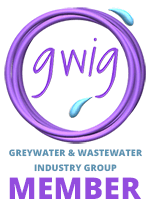
Mark Harland & Water Capture have been a Member of GWIG (Greywater & Wastewater Industry Group) since inception.
Mark Harland is the Treasurer at GWIG.
